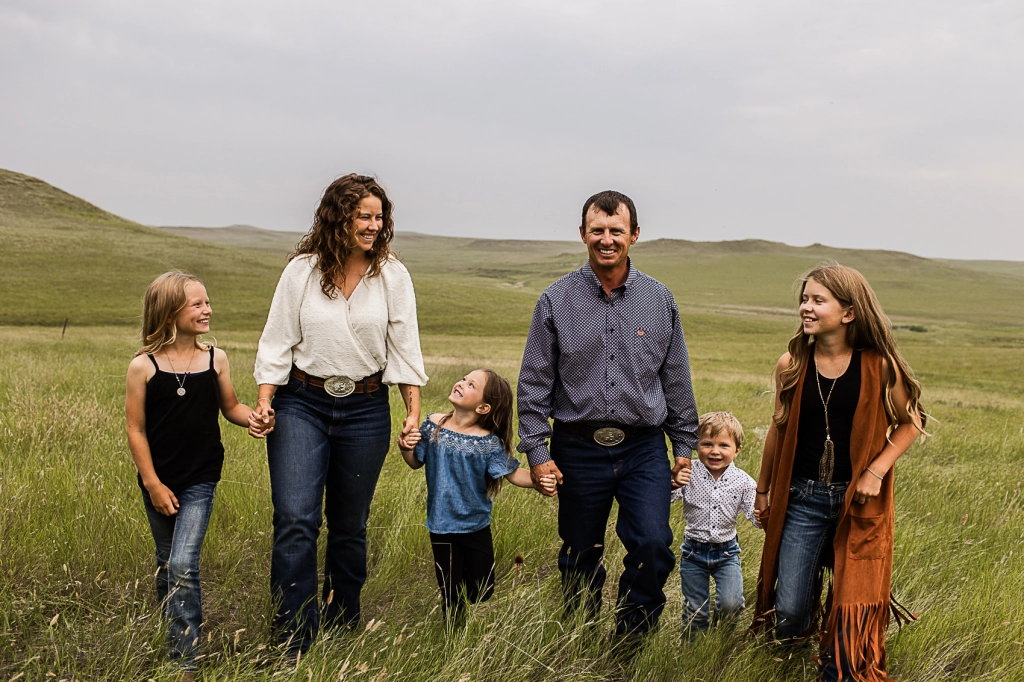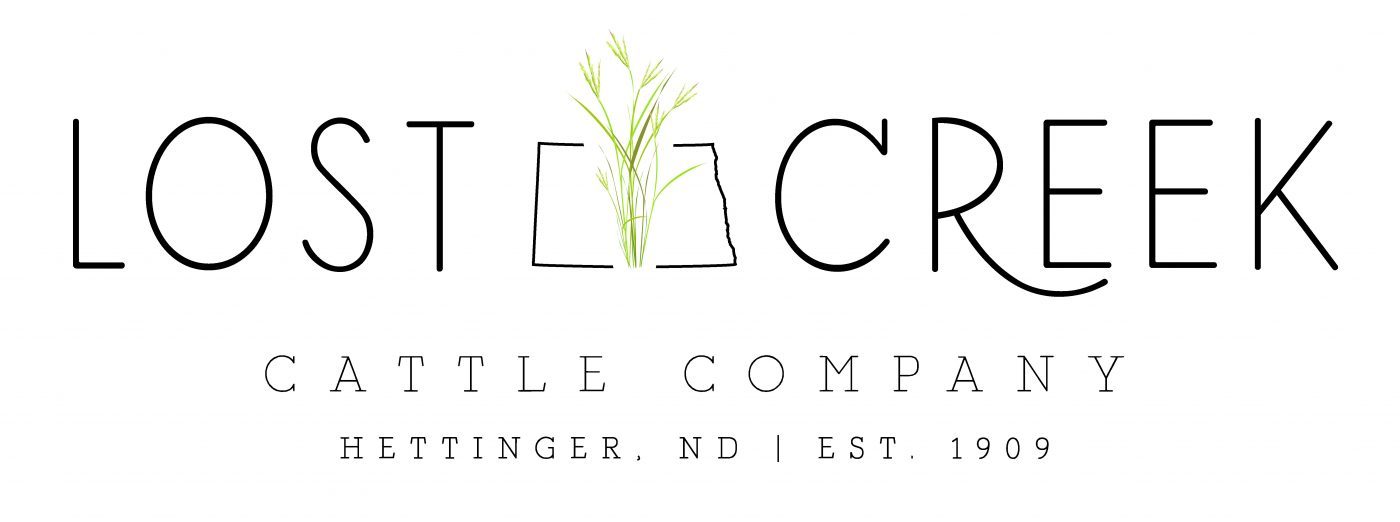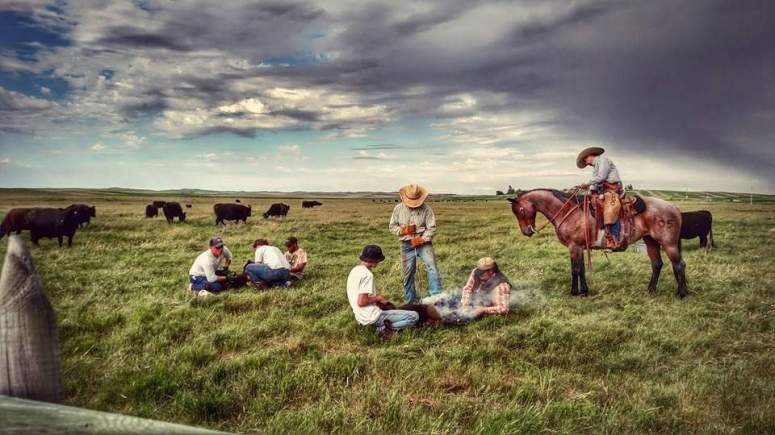




Welcome to Lost Creek Cattle Company. We raise grass, black angus cows, and blue eyed little cow kids. We are very excited about ranching and hope you will enjoy our operation as much as we do. Our door is always open to visitors and the coffee is always on.
Be sure to follow us on Youtube where you can see us “soiling our undies” We saw this challenge floating around some Soil Conservation Districts and thought what a fun way to teach our children there is life in the soil! We will be sure to show you the results in August!
In ranching, we tend to pride ourselves on the ability to fix anything and to overcome any problem that is laid before us. We spend a lot of time fixing fence, fixing equipment and putting out fires. How many of those problems didn’t have to become problems if we had taken the time to prepare?
We can make our businesses more efficient and effective if we take time to plan ahead. I am a repairer by nature and my wife is a preparer. It is in her nature to start off with a plan, while I like to step outside and see what the day brings. Working with her every day for the last several years has shown me the value of planning.
When we know the direction we are heading, it is much easier to avoid potential wrecks before they become a problem. We have started working on grazing plans, breeding plans and most recently financial plans as we prepare our business for the future.
Have you started preparing your business for profit, or are you going to wait and see what happens? Are you going to capitalize on the next few years of higher-than-normal income, or are you going to let expenses and inputs dictate the direction of your business? We will all have an opportunity to make more income the next few years than most of us have ever imagined! Are you prepared for it?
I heard Dave Pratt ask a group of producers what they would do with $25,000 of profit from their business. Have you ever thought about that? What about $100,000 of profit? How would you use and invest it?
Now is the time to get prepared! Be a preparer! Invest in genetics that will lower your cost of production and increase your profits. Make changes to your management that will allow you to graze more and longer. Plan for a profit – and know where you are going to invest that money.
I grew up in a small town in an agricultural community — but my family was not involved in agriculture. Nevertheless, I always dreamed of owning a ranch.
So you know I haven’t been living on a trust fund for the last twenty years, here is a list of jobs I have had: Marine, wildland fire fighter, retail worker, night shift security guard and grain buyer at a grain elevator.
I held my last job for eight years while building a ranch from scratch with three heifer calves. That little ranch grew into what has become my “fulltime” career – with 220 cows (and growing). Many of these cows are registered Pharo Cattle Company cows.
Working in town provided the capital required to start my ranching career. Kat and I made a commitment to live on $2,000 a month and put the rest of our wages towards the ranch. If you don’t have a definitive plan on how to invest your wages, you run the risk of getting off track and spending money on shiny things you don’t really need.
My last year at the elevator, I made $70,000. I also received a $40,000 bonus. I had good insurance and a 401k. As you might expect, I had many sleepless and prayerful nights before finally making the decision to quit my town job. You must be very careful not to allow your town job to become a safety net you are unwilling to walk away from when the time comes.
The most important thing about having off-farm income is deciding what to do with it. Having a written plan and knowing what you want and where you want to be in five, ten and twenty years will help give you the discipline required to create a profitable ranch.
We used our off-farm income to purchase 320 acres and our homeplace. We also used this income to expand the cowherd. We were able to purchase a skid steer and a 20-year-old bale-bed pickup without incurring debt. Those two pieces of equipment allowed us to achieve some economy of scale.
Knowing how to be disciplined with our money took much of the stress off my shoulders when I was no longer receiving a monthly paycheck from my town job. We are now a family of six — and we still do our best to live on $2,000 a month. ( Kat thinks it is time to increase that figure.)
With a goal and some financial discipline, it is possible to build a profitable ranch business from scratch. It is okay to use income from a town job — as long as you are committed to making your town job temporary. Too many parttime ranchers are afraid to walk away from their off-farm income. Until they do, they will never be a fulltime rancher.
Sweet spring time on the ranch. Full of baby chicks, baby calves, fencing projects, a few honey do lists in there as well, tree plantings, softball schedules, plenty of horse 4H dates thrown in for fun and moving grazing cells every 5 days. Did I mention I thought dog obedience was a great 4h project for the 7 year old?? I cant say I know exactly what day it really turns on, but all of a sudden we find ourselves dragging into the house at 8:00 pm with zero meal prep and finally sitting down to eat another round of sausage and mac and cheese.
It feels like not too long ago when we were a little….dare I say it….bored….
Like clock work in the spring, we automatically start getting up at 5 to squeeze a few more hours (lets be real sometimes its just a few more minutes) of productivity into our day.
It seems to me that the second we start going sideways is approximately the same time we step outside as a family for the day. Never fails…the four words you hate to utter and hate even more to hear “the cows are out”, someone trips in a hole and sprains an ankle (hypothetically), the baby can’t make his fisher price scooter go in the grass, the 4 wheeler starts on fire (also hypothetical), somehow the beloved family dog was locked away for the night in an outbuilding and lets play a fun game of marco polo to find her, or some other random distraction that takes you away from whatever you were actually set out to do.
So I really do try to keep everyone inside the compound until we have a little “pick up your toys” game, make sure there’s at least some form of protein taken out for supper, and maybe one load of laundry is in the vicinity of the washer. Its really not much of a game plan but for me my life just doesn’t feel quite as crazy as it sounds when i can at least serve a decent(ish) meal. If you’re reading this your probably as crazy as we are and I hope this little bit of awareness helps you control your day, instead of the other way around.
Its finally that time of year for us! We have had so many concerns over the last few weeks ” Did you make it through the blizzards?” And by no genius of our own, we did. We had no calves on the ground and the only struggle was the equipment to feed them daily. Yesterday we dropped about 4 calves and they are even early by our standards. Our true due date is May 15th but we were expecting them around the 5th. Its good for my soul to see these healthy babies born all on their own, in their own corner of the pasture, in nice 50 degree weather. I’ve also had a lot of questions about how our calf processing looks- here’s how we work them.

We’ve come out the other side of the “Historic April Blizzard”. The sun is shining today and the wind isn’t blowing- which is a true miracle. I think they’ve totaled the storm at 18 inches, which is less than 2 inches of actual moisture. But its the first 2 inches of moisture for a hopeful spring growing season. We stood out in the cow herd while the wind was howling and the snow was swirling and laughed about even thinking of calving any sooner than May 15th. Not because we are so smart to predict the weather and pin point the last spring snow storm. But because we honestly could never be set up for calving cows in lots and barns. Financially it would break us. Our little homestead has no room for a brand new 100 foot calving barn. Once again, we were reminded that to be an successful first timer in 2022, you are going to have to do some unconventional things
We had an unusually fun weekend planned. A big trip to the Watiki water park in Rapid City. No bull sale on the way, no grazing conference to swing in to, no other reason other than a fun time with friends. But we started hearing rumblings of a potential big snow coming so we had to make some tough calls in real short notice. Yes, the cows are out on corn stalks but they have a cement water tank that needs broke open every day if it even thinks about freezing and if the snow got too deep (spoiler alert- it did) we would need to go out and feed them. With no one else to lean on for chores we had to make the call to stay home. I thought for sure we were going to have tears and at least 2 really disappointed little girls. But they handled it like champs and seemed to totally understand that we had to stay for the cows.
We have had the entire cow herd out on sunflower stalks for about 2 weeks. This is the first time we’ve ever grazed sunflower stalks and so far the cows are looking great. It took a solid week for them to figure out how to graze the stalks, but there is plenty of grass waterways and sunflower heads on the ground to balance it all out. The weather is a major role in this whole plan working. Its been 40 degrees and above since they have been out there. The ten day looks to continue this trend. Aftermath grazing has become one of the important parts of planning out our grazing months.
The bulls have been shipped to the developer and will spend their summer being grown on grass by the team at Two Dot Land and Livestock in Harlowton Montana. We cull pretty hard here at home for
1. Disposition – If they are not safe for our kids to be around they are not safe for our customers.
2. Weight- bulls must weigh at least 425 lbs at weaning
3. General Eye Appeal – This might include lack of masculinity, long legged, or any structural issues.
This is only the first round of culls. We will make culls as needed throughout the growing season and again at bull evaluations- even the day of the sale if need be.
Those that we sent look tremendous and we are very excited about the future sales in Butte the 2nd Thursday of December.